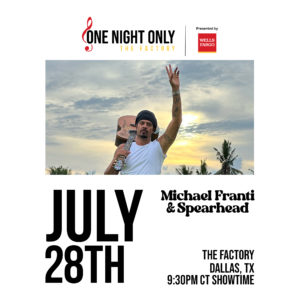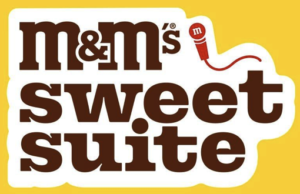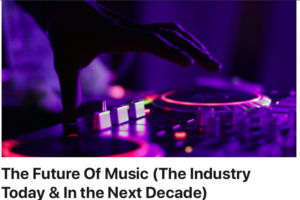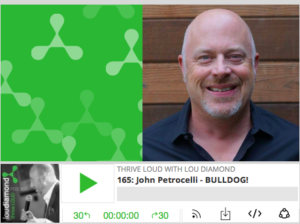
Thirty years ago, if you wanted your target audience to know about your product, you knew exactly how to reach them. Take out an ad in a magazine or newspaper, or run a 30-second ad spot on their favorite network, and you had guaranteed eyes on your brand.
Now, the game has changed. In 1998, 73 million people watched the series finale of Seinfeld. Those numbers are unheard of today: Last year’s highest-rated TV series, the ill-fated Roseanne reboot, only drew 10.5 million viewers for its much-hyped premiere.
The truth is that we’re not likely to ever go back to the days when a fifth of the country all tuned into the same exact broadcast: Today, Americans’ attentions are fragmented across thousands of different platforms and devices. Your target buyer isn’t tuned into Must-See NBC on Thursday night and sitting through a 30 second commercial —instead, she’s streaming her favorite shows on Netflix and Hulu, or curating a playlist of YouTube videos to watch on her iPad.
In fact, 27 percent of Americans between ages 18 and 34 don’t watch traditional TV at all. And of those that do, their attention is declining rapidly: Nielsen found that the time they spent watching TV in 2018 had dropped by 17 percent from the previous year.
So if you’re trying to raise awareness of your brand, simply running an ad on network TV—no matter how creative or well-executed—is not going to generate the reach that it once did. Instead, you need to think about how to reach your target audience on the platforms they actually are using today.
Why live streaming is ideal for today’s fragmented audience
In order to reach modern consumers, many brands are building highly segmented channel marketing strategies. They’re promoting ads on Google and Facebook, buying ad space on YouTube, and using retargeting to reach consumers wherever they are online. Digital marketing is far more sophisticated than traditional media advertising strategies of the past, with many more avenues for targeting specific types of users and reaching them wherever they are, most forms of digital media are missing one core element: a unified brand experience.
To maximize your impact, you want to build a cohesive brand experience that puts your brand front-and-center in an authentic way. And there’s no better way to do that than with a livestream, either using an already massive platform like Facebook, Twitter or YouTube, or on your own branded portal. Here are a few ways to engage your audience with a branded livestream:
Sponsoring live entertainment
By sponsoring and presenting a live entertainment broadcast, you can tap into the entertainers’ own audiences and build your brand cache, raising awareness and familiarity by powering a branded user experience throughout the course of the event. For example, Coca-Cola sponsored a livestream of the Vive Latino Festival, featuring over 70 musical artists from all over the world. The live stream featured multiple HD cameras enabling a high-quality broadcast from multiple stages allowing viewers to switch stages in real time. It resulted in nearly 4 million views – just from Coca-Cola’s branded web property, with viewers tuning in for nearly two hours on desktop and 30 minutes on mobile devices—an incredible level of user engagement for a branded experience. The live stream was also extended to YouTube, Facebook and Twitter further amplifying the experience.
Broadcasting a product launch
Livestreams can also be used effectively to promote a product launch. When Hyundai revealed its new Venue crossover SUV and its 2020 Sonata at the New York Auto Show the brand was able to expand its audience exponentially by livestreaming the new models’ reveal on YouTube, Facebook, Twitter, Instagram and Hyundai.com. The livestream helped to boost media attention to the new vehicles, resulting in nearly 260 million brand impressions around the launch.
Running a live Q&A
Livestreams don’t always need to be geared around big events—they can also serve as an effective way to boost engagement through interactive forums with your fans. Take Wilton Cake Decorating, for example. The cake decorating supplies company has built a massive social audience of more than 2 million Facebook followers, thanks in large part to its weekly Facebook Live events. The brand uses Facebook Live to share a live broadcast of a specific baking or decorating technique, such as “How to Make a Pineapple Pull-Apart Cake.” During the livestream, the Wilton staff reads and responds to questions from their viewers in real-time. It’s a great way to build a stronger connection with your fans and extend your reach to new audiences.
Partnering with an influencer
You can draw even more attention to your brand by engaging with an influencer marketing campaign—asking the influencer to collaborate on an authentic experience involving your brand. A great example of this strategy in action is the Kohl’s 2016 campaign with popular makeup vlogger Judy, whose YouTube channel ItsJudyTime has over 2 million subscribers. She went on a sponsored Black Friday shopping spree at Kohl’s with her mother which was broadcast live on Facebook, then followed up with a blog post that linked to all of the products she purchased at Kohl’s. The promotion generated nearly 200,000 views to the post.
In order to build a brand relationship with today’s cord-cutting consumers, it’s important to look beyond TV and magazine ads, which are quickly becoming obsolete.
According to eMarketer, millennials are the biggest consumers and creators of live video—63% have watched live content and 42% have created it.
And while digital marketing strategies can be helpful for keeping your brand top of mind, there’s nothing more powerful than a livestream for generating fresh attention to your brand and creating an authentically engaging experience. As you seek to build your marketing strategy for 2020, think about how you can bring best-in-class live streaming into your game plan to create a truly connected brand experience for your target audience.






